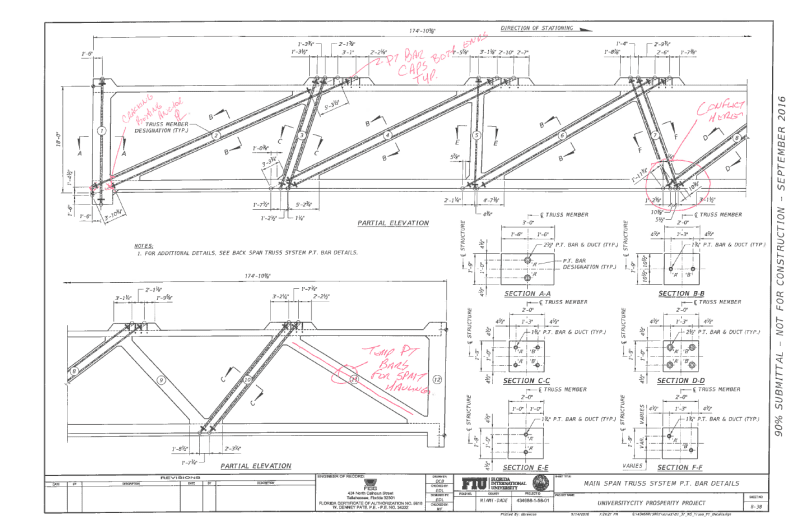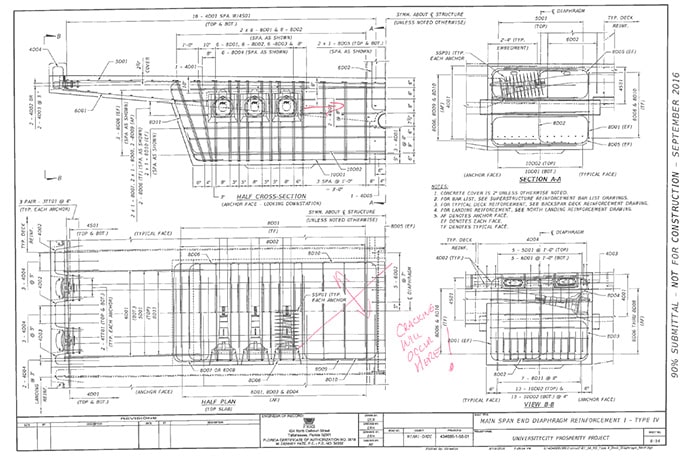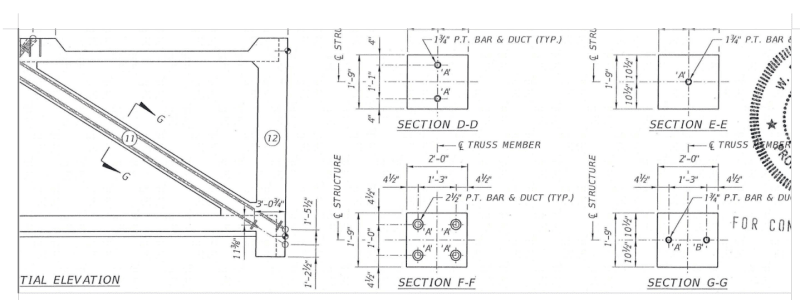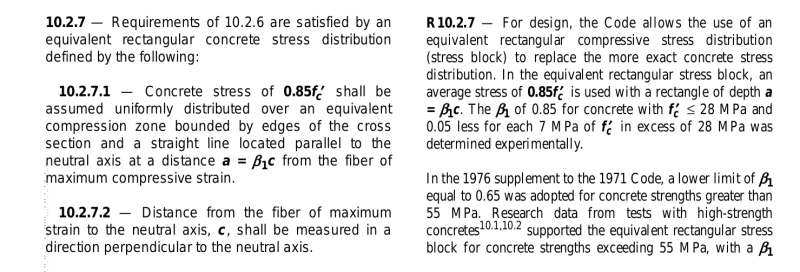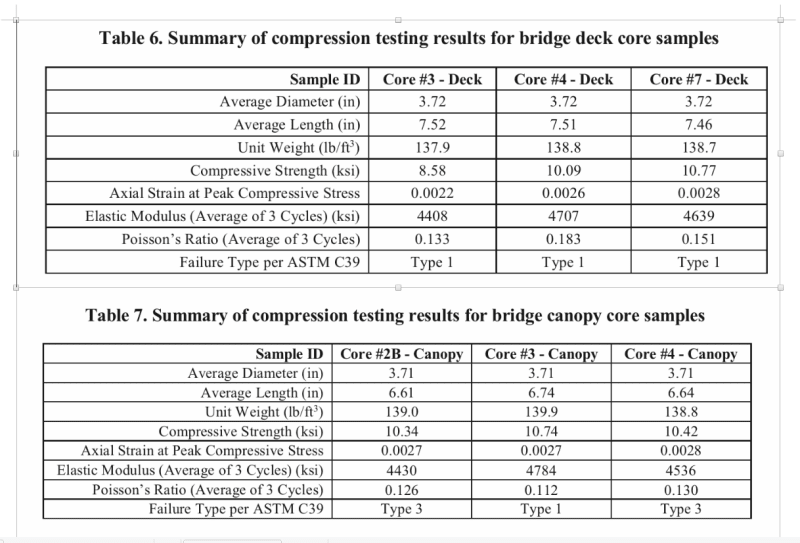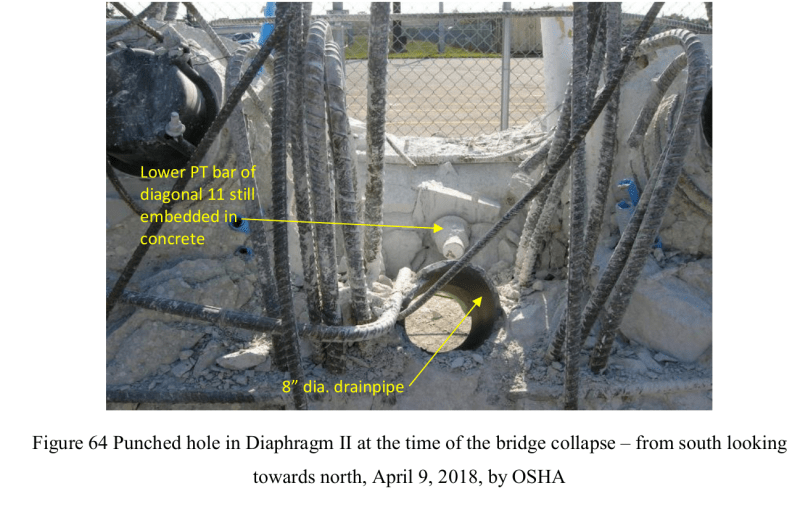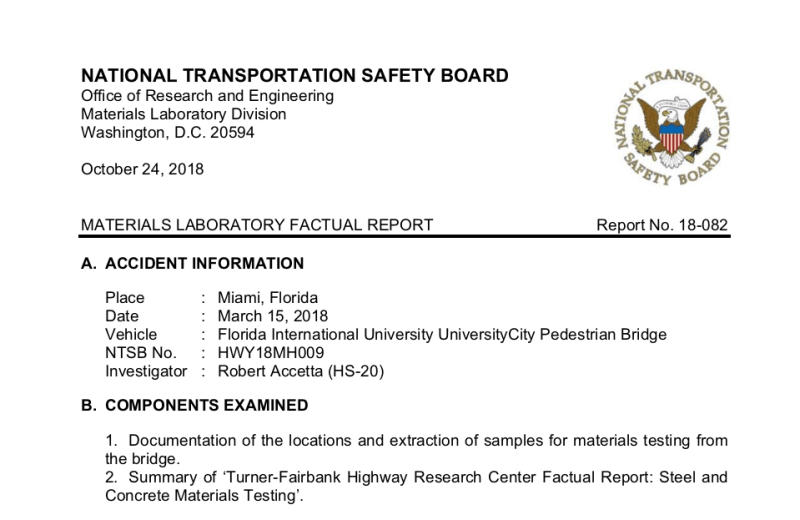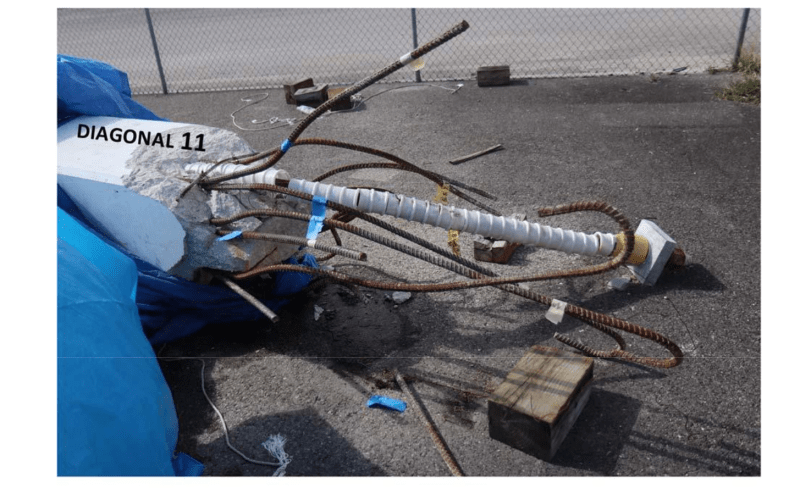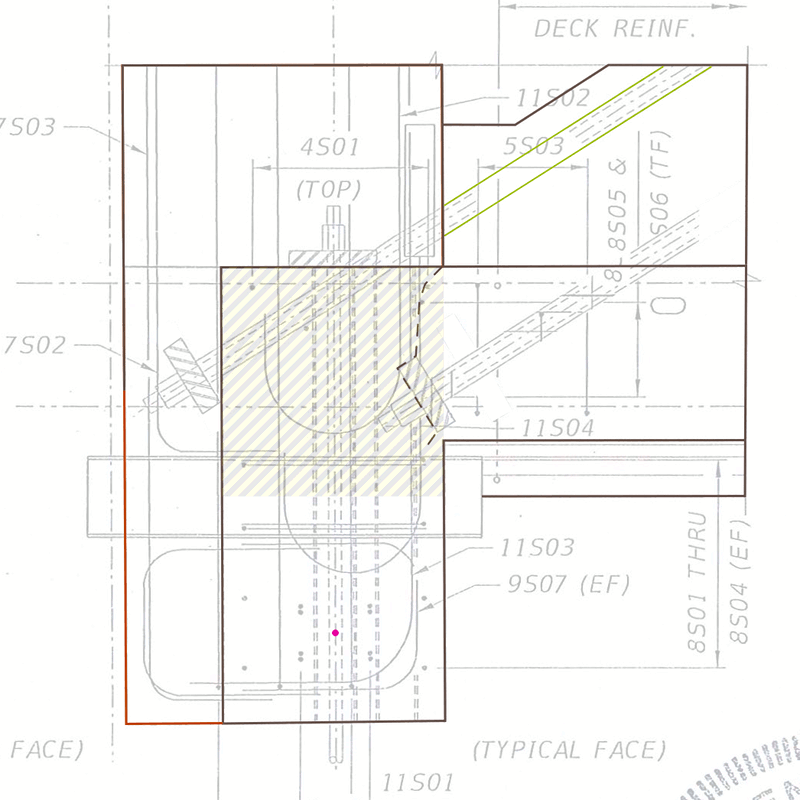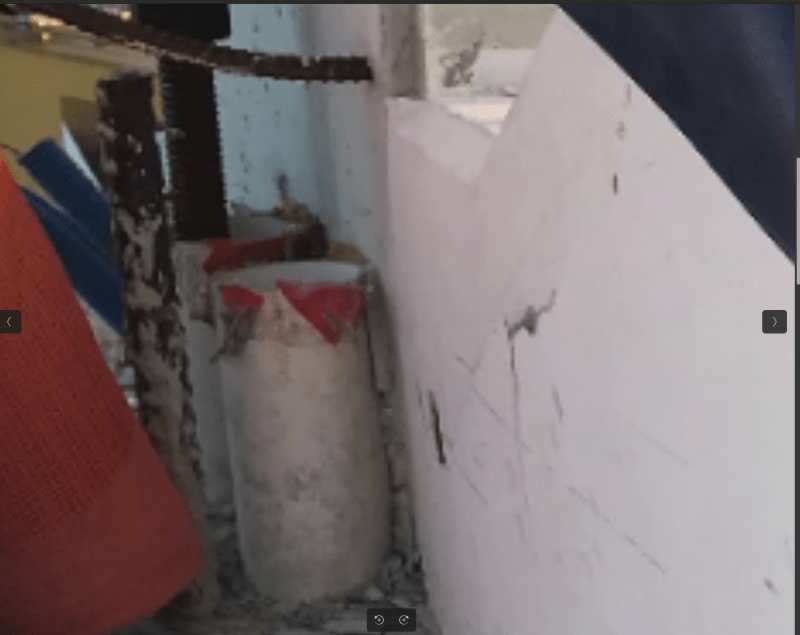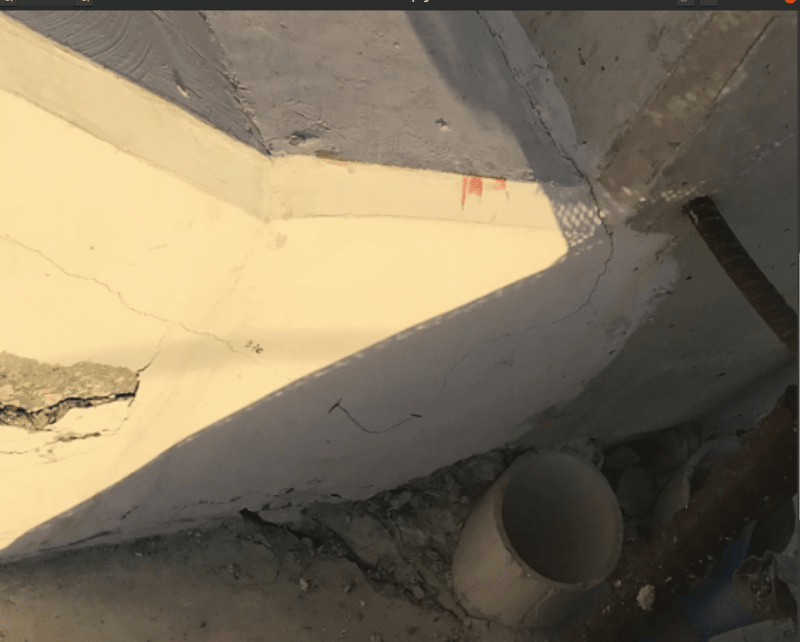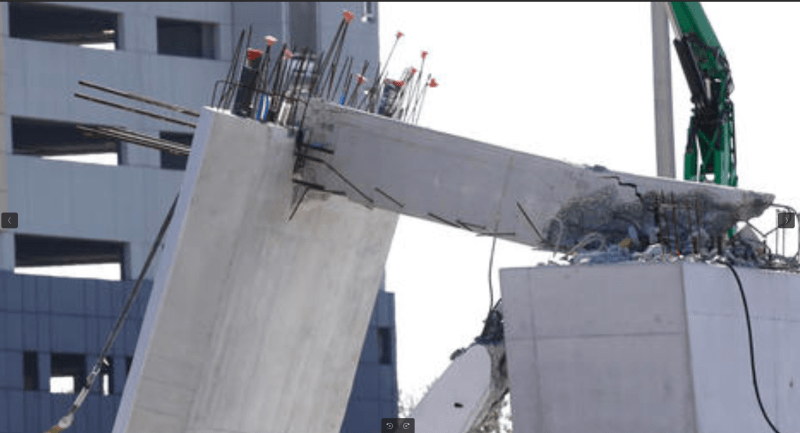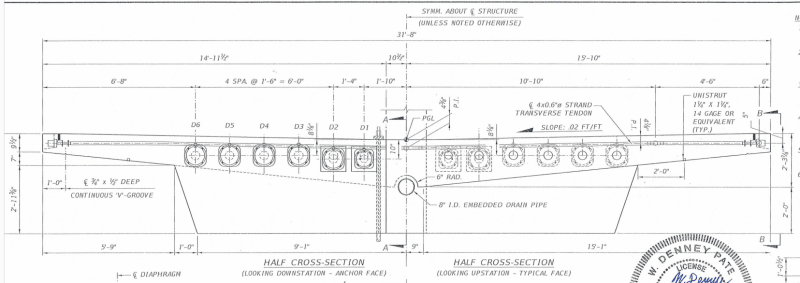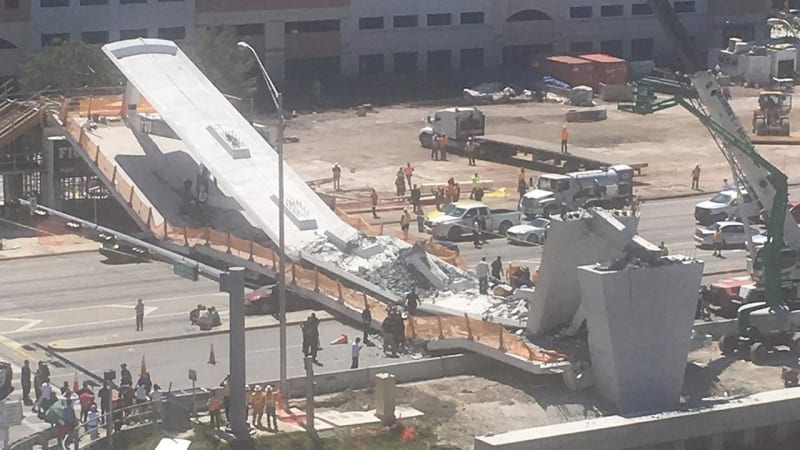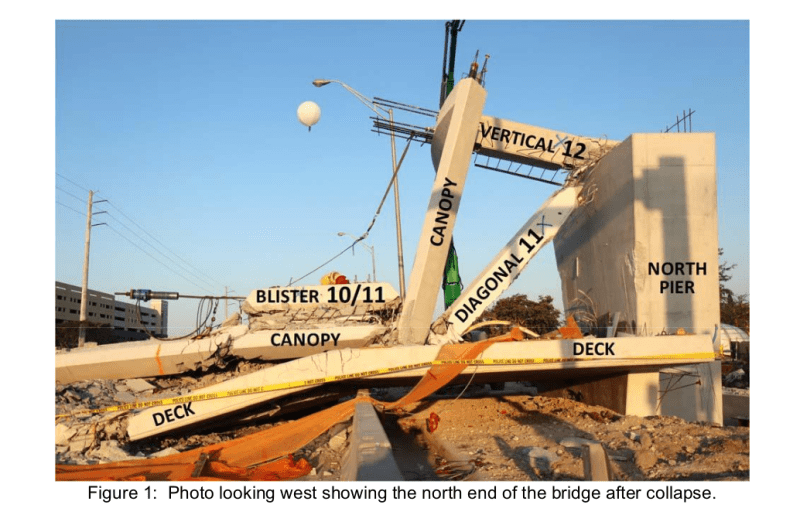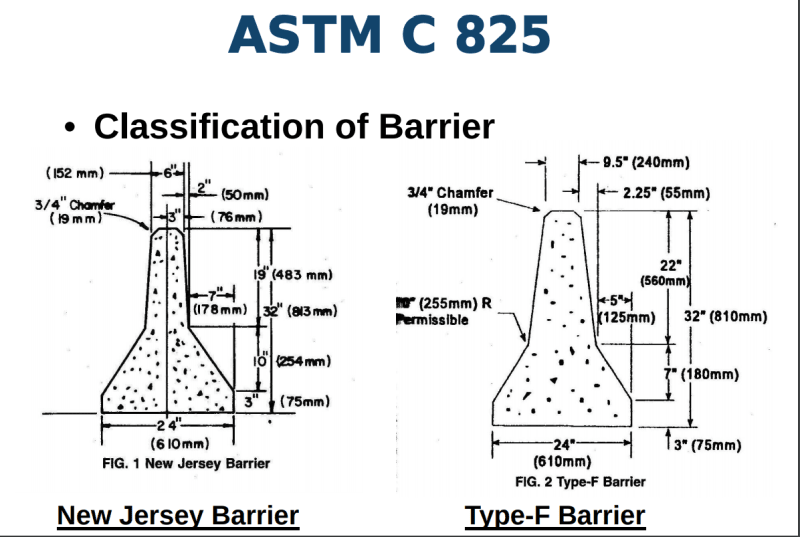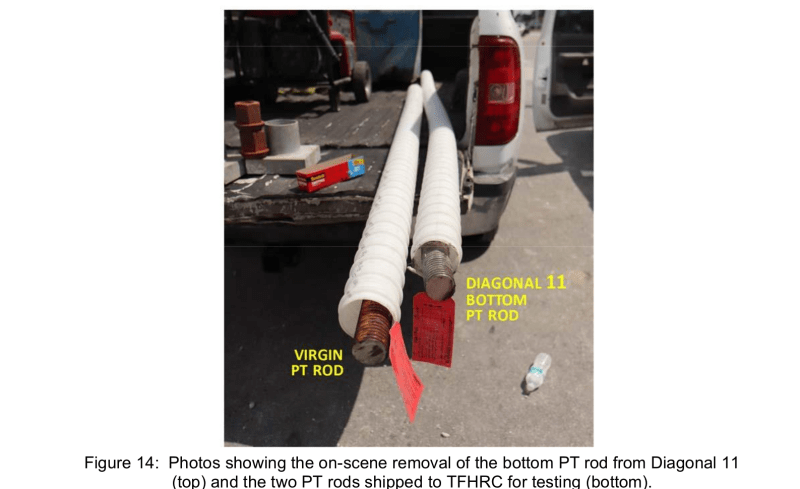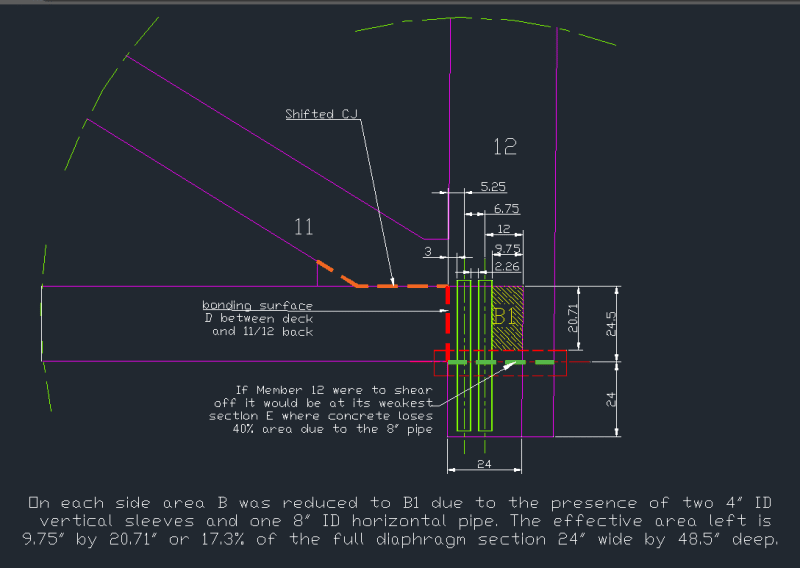Sym P. le (Mechanical),
You presentation with the changing static images is novel so is your postulation. The idea that Member 12 was pushed out, hinged somehow at the bottom and split at the deck level with Member 11 sounds exquisite and not without merit. The holding down bolt on either side of Member 12 could have provided the rotation point have indicated with the pink circle.
However there are some weakness in the postulaion of which among them are:-
(a) The separation of Member 11 from 12 at deck level, as confirmed by you couldn’t happen unless the tension of the PT rod is released. Therefore the photos available on 15 Mar, prior to re-tensioning, should show signs of the separation. FIGG has submitted seven photos dated 15 Mar to NTSB and I enclosed two of them here. The bridge was re-stressed from midday of 15 Mar and then collapsed.
The is no sign of any crack showing a separation of Member 11 from 12 on the west face.
On the east face a small crack is visible but it seems to trace back to the PT rods which have caused rather alarming surface cracking on both east and west faces of Member 11.
(b) If there has been a separation crack of Member 11 from 12 at the deck level then we can expect the Member 12 joint with the canopy to be pushed outwards and suffered some permanent damages. The actual joint, between the canopy and Member 12, appears remarkably intact after the collapse and remains substantially at 90 degree when I measured it for any permanent deformation.
(c) The ability of Member 12, which is only 1’-9” thick, could cause a rigid body rotation of the 18’ long diaphragm is stretching the imagination a bit, bearing in mind in the postulation Member 12 would have already partially separated from the deck and Member 11. I attach the end elevation of the diaphragm to show its relative size to the Member 12.
(d) If the evidence in the field is inadequate to support your postulation after the 11/12 has been de-stressed and the bridge was resting between piers then the subsequent re-stressing would make any separation crack between Member 12 with 11 even more difficult to occur because the upper PT rod would instantly clamp the two together. It was stated in NTSB report that the upper PT rod was first fully re-stressed, the 280 kips re-stress of the lower PT rod was just completed and the bridge fell.
I think the actual failure mechanism could remain a mystery for some time to come.

